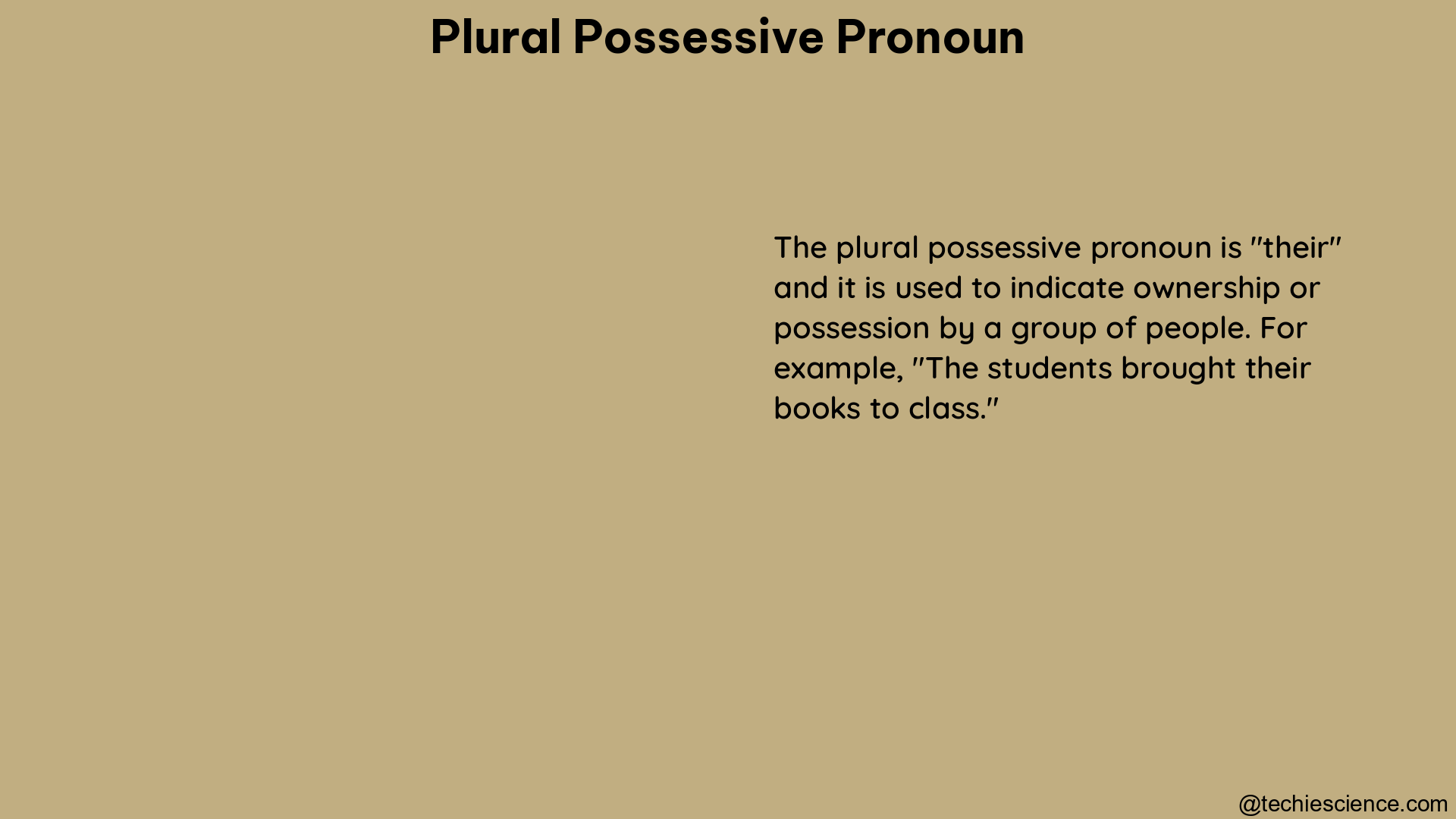Plural possessive pronouns are a crucial aspect of the English language, allowing us to express ownership or possession by multiple individuals or entities. These pronouns serve as powerful tools in our communication, replacing nouns and making our sentences more concise and clear. In this comprehensive guide, we will delve into the intricacies of plural possessive pronouns, exploring their definitions, grammatical rules, and practical examples to help you become a master of this linguistic concept.
Definition and Examples
Plural possessive pronouns are a type of pronoun that indicate ownership or possession by multiple individuals or entities. These pronouns are used to replace nouns in a sentence, making it more efficient and streamlined. The three main plural possessive pronouns are:
-
Ours: This pronoun indicates possession by the speaker and one or more other people. For example: “The house is ours.”
-
Yours: This pronoun can be both singular and plural, depending on the context. It indicates possession by the person or people being addressed. For example: “The car is yours” (singular) or “The room is yours” (plural).
-
Theirs: This pronoun indicates possession by one or more people other than the speaker or the person being addressed. For example: “The book is theirs.”
Grammatical Rules and Specifications

To effectively use plural possessive pronouns, it’s essential to understand the grammatical rules and specifications that govern their usage. Let’s explore these in detail:
Agreement with Nouns
Plural possessive pronouns must agree with the nouns they replace in number. This means that if the noun is plural, the corresponding possessive pronoun must also be plural. For example:
– “The children have their toys” (plural)
– “The child has her toy” (singular)
Usage as Nouns
Possessive pronouns act as nouns, not adjectives. They should be used as nouns in a sentence, replacing the noun they represent. For example:
– “I have my book, and you have yours” (correct)
– “I have my book, and you have your book” (incorrect)
Avoiding Confusion with Adjectives
It’s important to distinguish between possessive pronouns and possessive adjectives. Possessive adjectives, such as “my,” “your,” and “their,” modify nouns, while possessive pronouns replace them. For example:
– “This is my car” (possessive adjective)
– “This car is mine” (possessive pronoun)
Examples and Context
Let’s explore some real-world examples of plural possessive pronouns in context:
- Ours:
- “The house we inherited is ours.”
-
“Our family’s vacation home is ours to enjoy.”
-
Yours:
- “The room you are staying in is yours.”
-
“The tickets for the concert are yours.”
-
Theirs:
- “The car they bought is theirs.”
- “The decision they made is theirs to live with.”
Advanced Considerations
As you become more proficient in using plural possessive pronouns, you may encounter some more advanced scenarios and considerations:
Compound Possessive Pronouns
In some cases, plural possessive pronouns can be combined with other pronouns to create compound possessive pronouns, such as “ours,” “yours,” and “theirs.” These compound forms are used to emphasize or clarify the ownership or possession.
– “This house is ours, not theirs.”
– “The victory is yours, not mine.”
Possessive Pronouns with Gerunds
Plural possessive pronouns can also be used with gerunds (verb forms ending in “-ing”) to indicate possession or ownership of an action.
– “Their singing was impressive.”
– “Ours is the better approach.”
Possessive Pronouns in Formal Writing
In formal or academic writing, it’s important to use plural possessive pronouns consistently and appropriately. Avoid using contractions (e.g., “it’s” instead of “it is”) and maintain a formal tone throughout your writing.
Conclusion
Mastering plural possessive pronouns is a crucial step in enhancing your command of the English language. By understanding the definitions, grammatical rules, and practical applications of these pronouns, you can communicate more effectively, express ownership and possession with clarity, and demonstrate your proficiency in the nuances of the English language.
Remember, the key to mastering plural possessive pronouns lies in consistent practice, attention to detail, and a deep understanding of the underlying principles. With this comprehensive guide, you are well on your way to becoming a true expert in this essential aspect of the English language.
Reference:
- Study.com – Plural Possessive Nouns
- Reddit – Plural Possessive Pronouns
- Thesaurus – Possessive Pronouns

Hi, My name is Ammu Shaji. I hail from Kerala. I hold a post-graduate degree in English Language and Literature. I am an Academic writer by passion and profession.